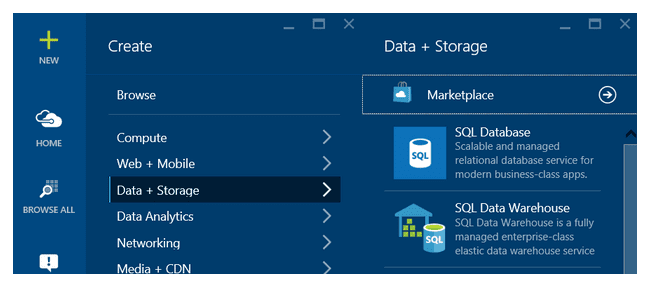This week, Microsoft released Azure SQL Data Warehouse to a limited public preview. Azure SQL Data Warehouse is a Massively Parallel Processing Data Warehouse engine offered as a service in Microsoft’s Azure cloud infrastructure. The service is fully mana
This is a very new service and all the features aren’t locked in yet, but there are several differentiators of this service that are extremely exciting:
Elasticity
What is massively different about Microsoft’s offering when compared to other Platform as a Service (PaaS) data warehouse offerings is it is highly elastic. What that means is you can grow it, shrink it or pause it at a moment’s notice. What’s more is, compute and storage scale separately. You only need to pay for processing performance when you need it. Scale it up for large queries and scale it back when your production demand is less. If you pause the service, you only pay for the storage.
Polybase
Polybase is a technology that has been available for some time in Microsoft’s on-premises offering the Analytics Platform System (APS). Polybase enables cross-querying between data stored in Azure SQL Data Warehouse and data stored in Hadoop on Azure Blob Storage. You can join relational tables to non-relational external tables using the standard T-SQL syntax you know and love.
Built-in Backups
Azure SQL Data Warehouse automatically backs up your data by taking database snapshots and creating restore points. It provides you with the ability to do a self-service restore from these backups.
Built-in Connectivity to Other Microsoft Tools and Services
Microsoft has built-in support for a number of their other tools and data services.
Azure Machine Learning
Azure ML is Microsoft’s fully managed service for advanced statistical analysis and predictive modeling. Azure SQL Data Warehouse is supported as both a source and destination for Azure ML Models.
Power BI with Direct Connect
Power BI is Microsoft’s cloud-based self-service Business Intelligence platform. Azure SQL Data Warehouse is supported as a data source for Power BI and furthermore, the Direct Connect option allows Power BI to send queries to Azure SQL Data Warehouse directly. This enables users to build reports and dashboards that query terabytes of data in real-time.
Azure Data Factory
Azure Data Factory is an orchestration service for data movement. With Azure Data Factory, you compose data processing pipelines to move and transform data between on-premises and cloud-based systems. ADF can move data to and from Azure SQL Data Warehouse and also trigger the execution of stored procedures.
Azure Stream Analytics
Azure Stream Analytics provides real-time, stream processing in the cloud. With ASA, you can query and analyze stream-based data while it is moving. Azure SQL Data Warehouse can be the output destination for Azure Stream Analytics.
SQL Server Data Tools
There is a new preview of SQL Server Data Tools (SSDT) that enables access to Azure SQL Data Warehouse in Visual Studio. Look for the June 2015 Preview update.
I can’t wait to get my hands on it!
MPP architectures are out of reach for many organizations because of the high cost of hardware and software and the resources it takes to support them. Azure SQL Data Warehouse has the potential to put massively scalable storage and processing power in the hands of any organization, and do it affordably. I signed up for the preview today and I can’t wait to hear back! You can request access to the preview on the Azure Portal under Data + Storage. My understanding is it is currently limited but Microsoft will grant more access as they continue to tune and optimize the service.
If you have interest in Data Warehouse, Modern Data Architecture and Big Data solutions, contact BlueGranite for a discovery call.




